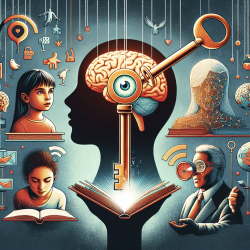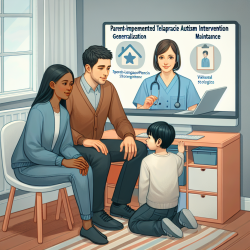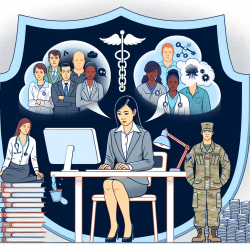The intrinsic connection between oral language development and the acquisition of reading and writing skills has been extensively studied over the past several decades. The majority of reading disabilities are language-based, a notion supported by a burgeoning body of literature. One significant resource in this field is the book "Language and Reading Disabilities" (1999), edited by Hugh W. Catts and Alan G. Kamhi. This comprehensive work provides valuable insights into the relationship between language development and reading disabilities, offering practical recommendations for assessment and intervention.
As practitioners, understanding the findings and recommendations from this seminal work can greatly enhance our ability to support students with reading disabilities. Let's delve into some key takeaways from the book and explore how we can implement these insights in our practice.
Understanding the Foundation
Chapter 1 of "Language and Reading Disabilities" lays the groundwork by discussing the similarities and differences between spoken and written language comprehension. Understanding these foundational concepts is crucial for practitioners, as it allows us to better identify and address the specific challenges faced by students with reading disabilities.
Insights into Reading Development
Chapter 2 reviews the literature on reading development, emphasizing the importance of understanding normal reading development to identify and address reading disabilities. The chapter highlights the processes and skills that enable children to become proficient readers, providing a framework for practitioners to assess and support students' reading development effectively.
Identifying Reading Disabilities
Chapters 3 and 4 delve into the characteristics and subtypes of reading disabilities. The authors identify three subgroups:
- Dyslexia: Characterized by word recognition difficulties with average listening comprehension skills.
- Language-learning disability: Characterized by difficulties in both word recognition and listening comprehension.
- Hyperlexia: Characterized by average word recognition skills but difficulties in listening comprehension.
Understanding these subtypes is crucial for practitioners, as it informs the assessment and intervention strategies we employ. An assessment by a speech-language pathologist is essential in determining the specific subtype and tailoring interventions accordingly.
Factors Contributing to Reading Disabilities
Chapter 5 explores the numerous intrinsic (child-centered) and extrinsic (environmental) factors contributing to reading disabilities. Recognizing these factors helps practitioners develop a holistic understanding of each student's unique challenges and strengths, enabling us to create more effective and personalized intervention plans.
Phonemic Awareness and Word Recognition
Chapter 6 focuses on the assessment and instruction of phonemic awareness and word recognition skills. Phonemic awareness is a critical component of reading development, and the chapter provides valuable insights into the purposes, procedures, and measures for assessing and instructing these skills. By incorporating these strategies into our practice, we can better support students in developing the foundational skills necessary for reading success.
Enhancing Text Comprehension
Chapter 7 complements the previous chapter by offering ideas for assessing and remediating narrative and expository text comprehension. The chapter emphasizes the importance of assessing linguistic and cognitive concepts, such as literate language, schemata, and metacognition. By employing the methods outlined in this chapter, practitioners can help students improve their comprehension skills and become more proficient readers.
Addressing Writing Disabilities
The final two chapters of the book address writing disabilities. Chapter 8 provides a framework for understanding the developmental sequence of writing skills and the challenges faced by children and adolescents. Chapter 9 offers a model for assessing and facilitating writing skills, with detailed scoring systems for evaluating various types of writing. By implementing the recommendations from these chapters, practitioners can support students in developing their writing abilities and overcoming writing difficulties.
Practical Applications for Practitioners
Here are some practical steps practitioners can take to implement the insights from "Language and Reading Disabilities" in their practice:
- Conduct comprehensive assessments: Utilize the assessment tools and strategies outlined in the book to identify specific areas of difficulty and determine the appropriate interventions for each student.
- Develop individualized intervention plans: Tailor interventions to address the unique needs of each student, considering their specific subtype of reading disability and the contributing factors identified during assessment.
- Incorporate phonemic awareness instruction: Integrate phonemic awareness activities into your practice to help students develop the foundational skills necessary for reading success.
- Enhance text comprehension skills: Use the methods outlined in Chapter 7 to assess and improve students' comprehension of narrative and expository texts.
- Support writing development: Implement the strategies from Chapters 8 and 9 to help students develop their writing skills and overcome writing difficulties.
By integrating these insights and recommendations into our practice, we can better support students with reading disabilities and help them achieve their full potential. "Language and Reading Disabilities" is an invaluable resource for practitioners, offering a wealth of knowledge and practical strategies for assessment and intervention.
To read the original research paper, please follow this link: Language and reading Disabilities (1999)










